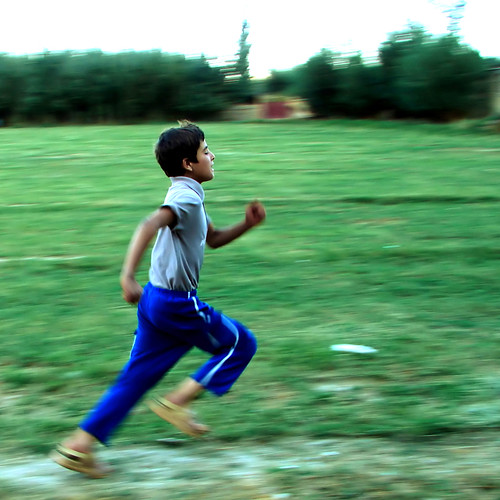As I work through my online master’s program, I’ll be posting my assignments here. Seems wrong to leave them locked in a walled garden.
My first assignment was participating in an online chat. When South African wifi and WebCT’s hate of all my browsers combined, I missed it. Below is my alternative assignment. What do you think?
Chat # 1 Synopsis
Date and Time: June 30, 2010, 6:00 pm EST
Name: Zac Chase
Course: EDUC 610
1. Discuss the importance of cooperative learning and the benefits that it has over lecturing
Cooperative learning puts more of the oneness for the processing of the learning on the learners in the classroom than traditional lecture. Properly infused, it also builds in time for checking for understanding and creates a natural push toward application rather than focusing on memorization and recitation. Again, these are qualities of cooperative learning when it is properly applied. Without attention to individual accountability or positive interdependence, the learning becomes group work and learners are allowed to slink into the background or take control of the work. Teacher facilitation is key in this respect. It shouldn’t be confused with turning over “control” of the classroom to the learners entirely.
2. Discuss the different strategies [you use] in your classroom using multiple intelligences, graphic organizers and reflective journals.
I try to have my learners moving frequently throughout the class period. In talking with occupational therapists, I know my learners’ brains benefit from changes of state every 15 minutes or so throughout the class. This is one of the places where I infuse cooperative learning and check for understanding. Granted, some classes are devoid of these 15-minute check-ins when lessons require more endurance or focused time in one state. As far as multiple intelligences, I don’t adhere to draconian measures prohibiting learners’ use of iPods or other MP3 players when reading or writing in the classroom. We’re learning that music of different tempos and rhythms reacts differently with different learners’ brains. If this can help any learner in my charge gain clearer access to reading, writing and thinking, I’m not about to stand in the way. Working in a project-based school, I attempt to design projects that give learners choice in their products whilst still adhering to the learning objectives of the unit and working toward understanding in relation to the units’ essential questions. Sometimes, this can mean students creating works of music, annotating video, creating performance pieces, writing essays or any other myriad of outputs. Along the way, quizzes and other assignments scaffold development of traditional skills. For the overall assessment, though, I ask the learners to produce from their preferred intelligences so I can better access their learning of the key concepts and understandings.
In the realm of graphic organizers and reflective journals, I use both quite frequently. Oftentimes, journaling will be the first component of the class. For prompts, I offer choice again. Learners may respond to a photo related to the day’s lesson, a quotation also related or they may free write. Whenever possible, I attempt to keep the free write option in the journaling assignment. As it’s the first assignment of the period, I want learners to have a time to process whatever issues they may be bringing with them from earlier in the day. Oftentimes, it allows them greater access to learning later in class and creates a safe space within their days.
3. Discuss the importance of active learning in the classroom.
I feel like this was touched on nicely in our online readings, but I’ll offer up my own thoughts here. Active learning, if structured properly can bring a level of equity to a classroom that would likely not otherwise be created. When working with learners of different backgrounds (which I would argue includes all learners), active learning can work against socially-established systems of privilege and work to allow discussions on a smaller scale that can both work against socially-constructed barriers as well as allow a processing and production of learning outcomes that would be left by the wayside in a classroom run strictly through lecture.
4. Discuss the importance of social development.
Learner engagement with the curriculum and the teacher requires engagement from the community within the classroom, including a social component among peers. Learners lacking in social development will become unable to focus due to their lack of connection to the classroom itself.
Social development in the classroom is dependent upon learners feeling safe. They must be able to relate their peers, and therefore must be presented with opportunities to do so. Anything from interest-based inquiries or self-selecting group projects can help to grow a learner’s social confidence, and connection to the classroom.
Many learners, however, will reject this kind of specifically social constructions within the classroom. Learners that feel as though these are contrived events may require a less “risky” environment within which to feel socially accepted. This is the perfect avenue for an online discussion or chat with other learners within which the more shy learners can engage and feel confident in their contributions. By creating an online profile, they are able to self-identify their interests and locate other learners in the classroom to collaborate with.
The teacher is responsible for facilitating social growth within each learner. While she may want to focus solely on the curriculum or on setting academic expectations for her classroom, social development is a major part of creating a functional environment within which learning occurs.
The teacher cannot simply call on the learners that she relates to, nor can she only promote the learners who need the most help into positions of least risk.
The role of the teacher is to find a balance for all learner-to-learner interaction in terms of all learners’ needs for socialization and growth in team collaboration. Just as a teacher would create mixed-ability groups for project-based learning, she must also create mixed-sociability groups in every learning situation. The simple act of asking a questions and soliciting responses is a social act. Maintaining a healthy back and forth between those in positions of comfort with their peers and those who are more apprehensive will lead the classroom to be a safe, and hopefully, appropriately social learning environment.
5. Discuss your current method of Classroom Management, how you came about using these methods…. then discuss [whether] “change” [is] difficult or easy for you
and why.
My current method of classroom management is based largely on the work of Hal Urban. A proactive approach, it focuses on community building and positive interaction with learners. From the beginning of the year, learners know to expect “high-grade compliments” from me randomly near the beginning of the class period. High-grade compliments entail three components 1) Close proximity, 2) Eye contact, 3) Thought. They focus on the aspects of learners that might otherwise go unnoticed by teachers and other adults in their life. Keeping the selection random also pushes me to sit in front of the most challenging learners in my classroom and really reflect on the best parts of those children. It requires me to see the good on a regular basis.
As for the daily operations in my class, I regularly incorporate cooperative learning strategies to keep learners engaged, operate in an online environment and am available regularly on Facebook and instant message. I’m fairly certain these external modes of communication and collaboration go the extra mile toward showing my learners I care about them and thereby help give them permission to care about our classroom community.
As for my willingness to change, I’m all for it. The caveat to that statement is so long as it is thoughtful, reflective change. My principle is fond of evoking the Law of Unintended Consequences and asking, “What is the worst consequence of our best idea?” So long as change comes with this contemplation, I’m receptive. Change for the sake of trying something new or because it’s popular can often be dangerous.
6. Questions regarding assignment # 1.
I’ve already posted this on the forum, but I’m wondering if our first discussion post must be only the problem statement or if we should also include an explanation to meet the stated 250-word requirement.
Like this:
Like Loading...
 I wasn’t quite certain what to expect when meeting the principal of Wavecrest Primary School Wednesday.
I wasn’t quite certain what to expect when meeting the principal of Wavecrest Primary School Wednesday. Running 13 miles didn’t kill me. I don’t even think I garnered any scars.
Running 13 miles didn’t kill me. I don’t even think I garnered any scars.
 October 17 I’ll be running the
October 17 I’ll be running the 
 Khanyiso, Mlungisi and I were in charge of leading the session on multimedia in the classroom Wednesday. It was the afternoon and the usual grumblings about too much theory and not enough practice had begun in a small contingent of teachers.
Khanyiso, Mlungisi and I were in charge of leading the session on multimedia in the classroom Wednesday. It was the afternoon and the usual grumblings about too much theory and not enough practice had begun in a small contingent of teachers. When I’m playing “What if?” and I come up with this scenario, I imagine someone tripping over a chord and the entire country making that cartoony power-down sound.
When I’m playing “What if?” and I come up with this scenario, I imagine someone tripping over a chord and the entire country making that cartoony power-down sound. Standing in line Thursday for lunch, one of the e-Personnel turned to me and questioned, “Zac, when will you be giving a workshop on how to have your energy?”
Standing in line Thursday for lunch, one of the e-Personnel turned to me and questioned, “Zac, when will you be giving a workshop on how to have your energy?”